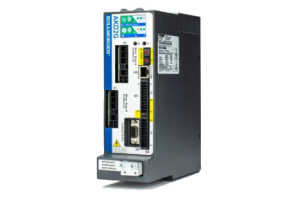Source: Tolomatic Blog. Originally posted by Gary Rosengren on Tue, Apr 22, 2014 @ 08:39 AM
Motion system designers often need to evaluate competing components to select the best one for an application. For linear actuators and other motion system components, the decision generally comes down to which product will provide the longest service life given the specifications of the project.
Manufacturers give you performance data which can serve as guidelines for componenselection and use. Keep in mind, though, this information is for the individual component only and may not relate directly to the configuration and conditions of your application.
When you’re comparing data from different manufacturers, be sure you’re comparing apples to apples. For linear actuators you may need to normalize the data of all the rolling elements (such as the ball screw or roller screw) as well as the linear bearing components in the system to the same Basic Rating Life (L10)
Basic Rating Life
International standards define life for individual ball or roller screws as the number of revolutions the shaft makes in relation to the ball nut body before the first evidence of fatigue develops in the load bearing raceways of the screw shaft, nut body, balls or rollers. For linear ball bearing systems life is defined as the linear distance traveled by a system before the first evidence of fatigue develops in the linear bearing rails.
Basic rating life (L10) for ball or roller screws for an individual screw or group of apparently identical ball/roller screws operating under the same conditions is the life associated with a 90% probability of achieving the nominal life (1,000,000 revolutions.) For linear bearing systems, basic rating life (L10) is expressed in linear units (100,000 meters of travel).
The standardized life equation for ball/roller screws is:
L10 = (C/P)3 x 1,000,000, where
L10 = basic rating life in revolutions
C = dynamic load rating
P = application load
The standardized life equation for linear bearing systems is:
L10 = (C/P)3 x 100,000, where
L10 = basic rating life in meters of travel
C = dynamic load rating
P = application load
These equations show the fundamental relationship between load and life. When the load on any given load bearing component is reduced by half, the life is eight (8) times longer. Inversely, increasing the load by 50% reduces the expectation to about 30% of life.
A Real-Life Example
Consider this example of evaluating linear bearing capability. You need to determine which actuator is more robust and best suited for an application. Manufacturer “A” (in red on the chart) has a maximum load capacity of 3,080 N (692.4 lbs.) while manufacturer “B” (in blue) has a maximum capacity of 1,996 N (448.7 lbs.)
In this first chart (on right) it looks like “A” is the winner, doesn’t it?
But consider this. Manufacturers specify the linear distance or number of revolutions to which their ratings apply. So load ratings are based on the rolling elements’ specified L10 travel distance.
In our example manufacturer “A” has a Basic Rating Life of 600 Km while manufacturer “B” has a Basic Rating Life of 5000 Km. When Basic Rating life is normalized to 600 Km, this second chart (on left) tells a different story. Because the product from manufacturer “B” is able to carry the load for a longer distance, manufacturer “B” wins.
Normalizing the manufacturers’ data is a critical step in comparing performance data. It can lead to important discoveries.





